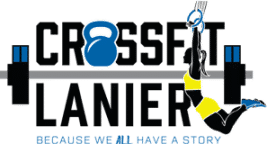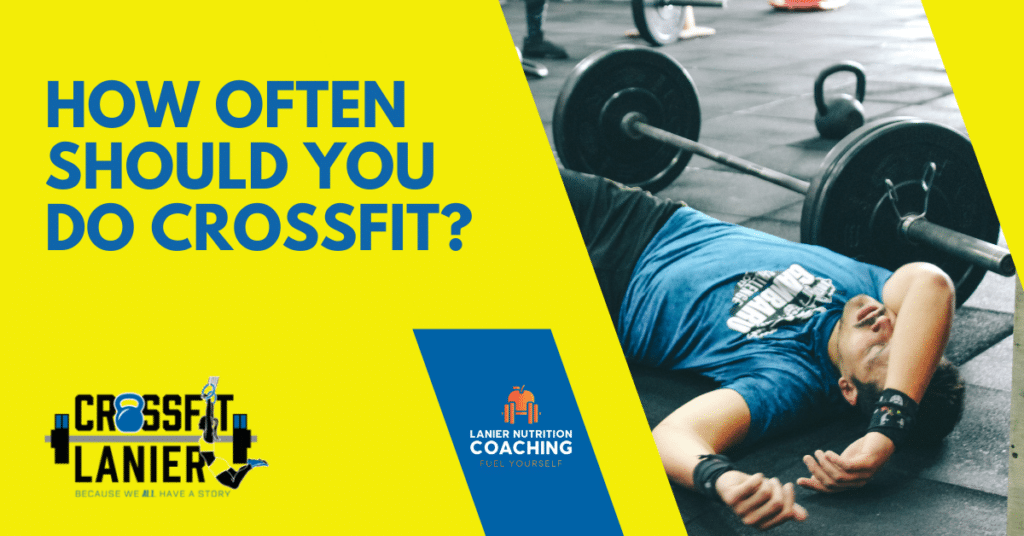CrossFit is known for its high-intensity workouts and varied exercises that keep athletes engaged and constantly challenged. However, a common question arises: How often should you do CrossFit to achieve optimal results without overtraining? This blog post provides guidelines on frequency and rest days tailored to different fitness levels, helping you find the perfect balance for your CrossFit routine.
Before diving into specific recommendations, it’s essential to understand why workout frequency matters. The intensity of CrossFit workouts means your body needs adequate time to recover, adapt, and grow stronger. The right balance of workout days and rest days ensures you make consistent progress without risking injury or burnout.
The frequency of CrossFit workouts varies based on individual goals, fitness levels, and recovery ability. Here’s a breakdown for different fitness levels:
How Often Should Beginners (0-3 Months) Do CrossFit?
For those new to CrossFit, we believe starting slow and building a solid foundation is crucial. The first few months should focus on learning proper form, understanding the exercises, and gradually increasing intensity.
Recommended Schedule:
- 3 Days a Week: Aim for three non-consecutive days per week (e.g., Monday, Wednesday, Friday).
- Rest Days: Ensure rest days between workout days to allow your body to recover and adapt.
Here’s an example week:
Monday: CrossFit
Tuesday: Rest or light activity (e.g., walking, stretching)
Wednesday: CrossFit
Thursday: Rest or light activity
Friday: CrossFit
Saturday: Rest or light activity
Sunday: Rest
Key Points for Beginners:
- Focus on Technique: Learning proper form and technique to prevent injuries is essential. This is where a coach can really help you as a beginner!
- Listen to Your Body: Pay attention to how your body feels and adjust the intensity as needed.
- Stay Consistent: Consistency is key. Stick to your schedule and gradually increase intensity over time.

How Often Should Intermediate (3-12 Months) CrossFit Athletes Workout?
As you become more comfortable with CrossFit and your fitness level improves, you can increase the frequency of your workouts. Intermediate athletes can handle more volume and intensity while continuing to focus on technique and recovery.
Recommended Schedule:
- 4-5 Days a Week: Aim for four to five days of CrossFit workouts per week, incorporating a mix of strength training, conditioning, and skill work.
- Rest Days: Include one or two full rest days and one or two active recovery days.
Example Week:
Monday: CrossFit
Tuesday: CrossFit
Wednesday: CrossFit
Thursday: Active recovery (e.g., yoga, light cardio)
Friday: CrossFit
Saturday: CrossFit
Sunday: Rest
Key Points for Intermediate Athletes:
- Balance Intensity and Volume: Mix high-intensity days with moderate-intensity or skill-focused days.
- Prioritize Recovery: Ensure you get enough sleep, hydration, and proper nutrition to support your increased activity level.
- Monitor Progress: Track your workouts and progress to adjust your schedule as needed.

How Often Should Advanced (12+ Months) CrossFit Athletes Workout?
Advanced CrossFit athletes have a higher capacity for volume and intensity. They can handle more frequent and demanding workouts but still need to prioritize recovery to maintain performance and prevent overtraining.
Recommended Schedule:
- 5-6 Days a Week: Aim for five to six days of CrossFit workouts per week, combining high-intensity sessions, strength training, and skill work.
- Rest Days: Include at least one full rest day and consider active recovery on lighter days.
Example Week:
Monday: CrossFit (high-intensity)
Tuesday: CrossFit (strength-focused)
Wednesday: CrossFit (conditioning)
Thursday: Active recovery (e.g., mobility work, swimming)
Friday: CrossFit (high-intensity)
Saturday: CrossFit (skill-focused)
Sunday: Rest
Key Points for Advanced Athletes:
- Periodization: Incorporate periodization into your training to balance intensity, volume, and recovery throughout the year.
- Recovery Techniques: Utilize advanced recovery techniques like massage, compression therapy, and mobility work.
- Listen to Your Body: Even at an advanced level, it’s crucial to always listen to your body and adjust your schedule to avoid overtraining.
Factors Influencing Your CrossFit Schedule
Several factors can influence how frequently you should do CrossFit. Understanding these factors can help you tailor your schedule to your specific needs and goals.
Individual Goals
Your specific fitness goals will play a significant role in determining your CrossFit frequency. Whether you aim to build strength, improve cardiovascular fitness, lose weight, or compete in CrossFit events, your goals will influence your training schedule.
Examples:
- Strength Goals: Incorporate more strength-focused sessions with adequate rest days to allow for muscle recovery and growth.
- Cardio Goals: Increase the number of conditioning workouts and include active recovery to support cardiovascular health.
- Competition Goals: Plan your schedule around competition dates, with a mix of intense training periods and tapering phases to peak at the right time.
Recovery Ability
Your body’s ability to recover from workouts is crucial. Factors like age, sleep quality, nutrition, and stress levels all influence recovery.
Tips for Enhancing Recovery:
- Sleep: Aim for 7-9 hours of quality sleep per night to support muscle repair and overall recovery.
- Nutrition: Fuel your body with a balanced diet rich in protein, carbohydrates, and healthy fats. Consider working with a nutrition coach for personalized advice.
- Hydration: Stay hydrated to support muscle function and recovery.
- Stress Management: Incorporate stress management techniques like meditation, deep breathing, and relaxation exercises.
Training Intensity and Volume
The intensity and volume of your CrossFit workouts will impact your recovery needs and overall schedule. High-intensity workouts require more recovery time, while lower-intensity sessions may allow for more frequent training.
Balancing Intensity and Volume:
High-Intensity Days: Limit the number of high-intensity workouts to 2-3 per week and follow them with rest or active recovery days.
Moderate-Intensity Days: Include moderate-intensity workouts that focus on skill development and technique.
Active Recovery: Incorporate low-intensity activities like yoga, stretching, or light cardio to promote recovery without overloading your body.
Experience Level
As discussed earlier, your experience level in CrossFit plays a significant role in determining your ideal training frequency. Beginners need more rest to adapt to the demands of CrossFit, while advanced athletes can handle more frequent and intense workouts.

Signs of Overtraining and the Importance of Rest
Regardless of your fitness level, it’s essential to recognize the signs of overtraining and prioritize rest days to prevent burnout and injuries. Overtraining can hinder progress and lead to long-term health issues if not addressed promptly.
Potential Signs of Overtraining:
- Persistent Fatigue: Feeling constantly tired, even after adequate rest.
- Decreased Performance: Noticing a decline in workout performance or strength.
- Increased Injuries: Experiencing frequent or chronic injuries.
- Mood Changes: Feeling irritable, anxious, or depressed.
- Sleep Disturbances: Having trouble falling asleep or staying asleep.
Importance of Rest Days:
- Muscle Recovery: Rest days allow muscles to repair and grow stronger.
- Injury Prevention: Taking regular rest days reduces the risk of overuse injuries.
- Mental Health: Rest days provide a mental break from intense training, reducing stress and improving overall well-being.
- Performance Enhancement: Incorporating rest days into your schedule can lead to improved performance and greater long-term gains.
Creating a Balanced CrossFit Schedule
To create a balanced CrossFit schedule that maximizes results while minimizing the risk of overtraining, consider the following steps:
1. Assess Your Goals and Experience
Determine your fitness goals and assess your current experience level. This will help you tailor your schedule to meet your specific needs.
2. Plan Your Weekly Workouts
Based on your goals and experience, plan your weekly workouts to include a mix of high-intensity, moderate-intensity, and active recovery days. Ensure you incorporate rest days to allow for adequate recovery.
Sample Weekly Schedule for Intermediate Athletes:
Monday: CrossFit (strength-focused)
Tuesday: CrossFit (conditioning)
Wednesday: CrossFit (skill development)
Thursday: Active recovery (yoga or light cardio)
Friday: CrossFit (high-intensity WOD)
Saturday: CrossFit (moderate-intensity)
Sunday: Rest
3. Monitor Your Progress and Adjust
Track your workouts, progress, and how your body feels. Use this information to adjust your schedule as needed. If you experience signs of overtraining, consider adding more rest days or reducing workout intensity.
4. Prioritize Recovery
Make recovery a priority by incorporating adequate sleep, nutrition, hydration, and stress management into your routine. Recovery techniques like foam rolling, stretching, and massage can always be used to support muscle recovery.
5. Seek Professional Guidance
Consider working with a CrossFit coach or personal trainer to create a personalized schedule that aligns with your goals and ensures proper technique and progression. We’ve got expert coaching as well as certified nutrition coaches here at CrossFit Lanier to help you stay on track and achieve your goals!
Finding the Balance
Finding the ideal CrossFit schedule requires a balance of workout frequency, intensity, and rest. Whether you’re a beginner, intermediate, or advanced athlete, understanding how often you should do CrossFit and incorporating rest days is crucial for optimal performance and long-term success.
At CrossFit Lanier, we’re here to help you find the perfect balance and achieve your fitness goals. Our experienced coaches can provide personalized guidance and support to ensure you train effectively and safely. Ready to take your CrossFit journey to the next level? Join us at CrossFit Lanier and discover the difference expert coaching and a supportive community can make. Your fitness goals are within reach—let’s achieve them together!




